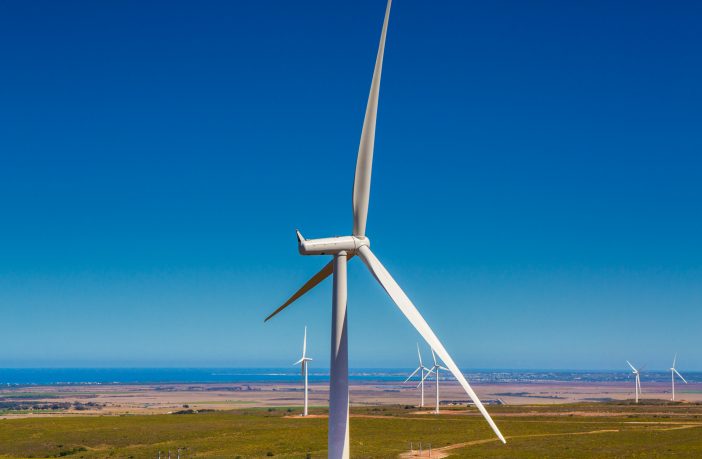Webinar Outcome
The South African Wind Energy Association’s (SAWEA) recent Windaba webinar unpacked the uncharted territory of refinancing renewable energy projects in South Africa.
In May this year, the Department of Mineral Resources (DMRE), via the IPP Office (IPPO) invited Bid Window 1 – 3.5 Independent Power Producers (IPPs) to consider participating in a voluntary refinancing initiative, with the idea of assisting the Department to lower the tariffs associated with these bid windows. This was preceded by the direct engagement between the Minister of DMRE, Public Enterprises, IPPs and lenders in September 2019, to explore options available, with the aim to lower the wholesale price of electricity.
It is reported that there is a ‘general willingness and support of the primary objective, which is to stimulate economic growth in South Africa, by passing any reduction in tariffs back to the consumer.
“The refinancing of existing IPPs is something new to our fairly nascent industry, but it indicates that the renewable energy sector in South Africa is starting to mature,” explained Ntombifuthi Ntuli, CEO of SAWEA.
Speaking at the event, Ms Elsa Strydom, Senior Project Manager at the IPPO said that following an engagement with the IPPs last year, a special task team was established by the DMRE to explore different approaches to achieve tariff reduction for earlier REIPPPP projects. The task team, which takes a form of a war room, comprised the representatives from the Banking Association of Southern Africa, the DMRE and the IPPO. The recommendation from the task team, which has since been approved by Minister Mantashe, was that refinancing was the best option to approach tariff reduction.
Strydom used the webinar forum to reiterate that although the participation in the refinancing initiative is voluntary, by the end of May 2020, 70% of South Africa’s 64 IPPs had indicated a positive response to the process, responding to individual invitations.
“The refinancing gain will be shared at least on a 50/50 basis, but higher sharing percentages may be negotiated on a case-by-case basis,” outlined Strydom. She went on to explain that the Energy Minister expected that the initiative should not lead to an increase in contingent liabilities associated with these projects, and that the outcome of the refinancing should result in a reduction in tariffs over the remainder of the power purchase agreement (PPA) term.
To ensure a standardised approach, the DMRE issued its refinancing protocols for IPPs on July 9, the morning of the webinar. Additionally, it has been confirmed that because this is viewed as a War Room and due to the urgency of the matter, the timeous approvals and support from Eskom and the National Energy Regulator of South Africa (NERSA) have been solicited by the Department of Energy (DOE).
A recent online poll has indicated that the sector agrees with the DMRE’s view that it is unlikely that refinancing IPP’s would negatively impact market confidence in future procurement rounds. In their letters to the IPPs, the DMRE also indicated that it is of the view that this initiative is aligned with best practise and will not affect market confidence or undermine any future procurement process.
Speaking at the event, RMB’s Daniel Zinman, explicated the need for shareholders to realise value from the refinancing process too, and not just the clear advantages for the end-user. He was joined by Jason van der Poel, Partner at Webber Wentzel, in outlining that IPPs will need to ensure that the contingent liability to the National Treasury, post-refinancing, should not exceed the original liability at any point in the IPPs lifespan.
According to the webinar’s panel of experts, there are a multitude of ways in which IPPs can be refinanced, each with their own set of benefits and consequences. These include maintaining existing debt levels and structure, but reducing margins; increasing existing debt levels; increasing debt tenor; converting Johannesburg Interbank Average Rate debt to Consumer Price Index debt; replacing reserve accounts with contingent facilities; replacing junior debt with senior debt, introducing preference shares; and restructuring existing risk management strategy and hedging policies.
Looking to the opinion of an IPP, Noblesfontein Wind Farm’s Financial Manager Hennie Hanekom believes that one of the biggest incentives for refinancing at this point is so that IPPs can obtain a new loan that has improved terms, compared to existing loans. These terms include lower financing costs, relaxed covenants, changed variable base rates, changed finance instruments and improved duration of tenor. However, he warned of the pitfalls relating to solvency and leveraging requirements, which might restrict equity distributions, and increased credit ratings could lead to higher finance costs.
Other international markets have embarked on refinancing, with Canadian renewable energy company Boralex, refinancing almost all of its wind farm operations in France for a total of $1.7bn a couple of years ago. Additionally, in 2015 the ratings agency, Moody’s, released a report stating that the rising investor interest in the European renewable energy sector is leading to refinancing, which could result in lower credit risk, in particular for certain projects in Spain and Italy. The report further stated that refinancing activity in the European renewable energy sector is on the rise thanks to growing interest from infrastructure funds.
Despite the impact of the current pandemic, it is expected that the refinancing process will take between four and six months, with real progress predicted by September 2020.
“Whilst refinancing remains an unchartered territory in the South African renewable energy sector, we are pleased to be working with industry stakeholders to ensure that parties remain committed to engagement for the benefit of the sector and end-consumers,” concluded Ntuli.
Author:GBA News Desk
Source: SAWEA











